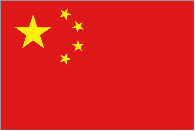 China China
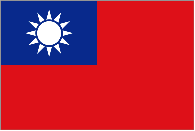
Taiwan
 Philippines Philippines
← West Malayo-Polynesia as far as
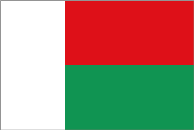 Madagascar Madagascar
→ Central & East Malayo-Polynesia & Oceania
as far north as  Hawaii Hawaii
Stages 1 & 2: Taiwan - Philippines - Sulawesi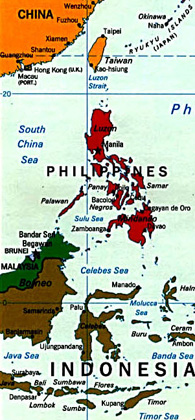
Stage 3: Halmahera - New Guinea - Solomons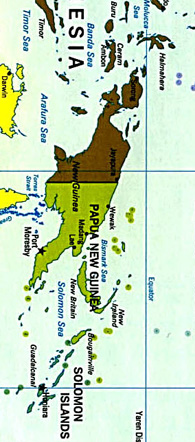
Stages 4 - 8: Solomons - Vanuatu - Fiji - West Polynesia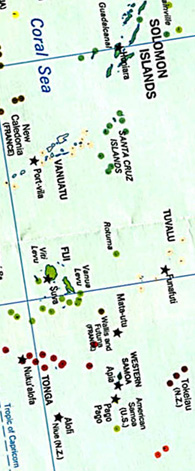
Stages 9 - 12: West Polynesia - Tahiti - Aotearoa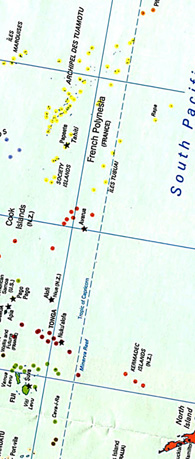
Other Countries Settled by Austronesian Speakers on the way to Aotearoa
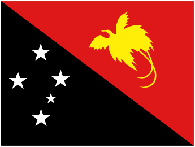 Papua New Guinea Papua New Guinea
 Solomon Islands Solomon Islands
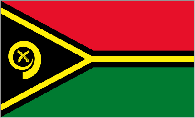 Vanuatu Vanuatu
 Fiji Fiji
 Tonga Tonga
 Samoa Samoa
 Tuvalu Tuvalu
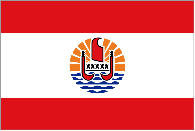 French Polynesia French Polynesia
 Cook Islands Cook Islands
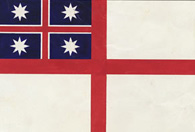 Aotearoa Aotearoa
[United Tribes flag, 1835]
|
A Genealogy of Names
On this page:
Introduction
Stages in the history of Polynesian languages
How words have been modified
Orthography
Introduction
The “Austronesians” are a people who migrated from southern China over 5,000 years ago, settling first in Taiwan. From there they moved through the Philippines, and then some ventured further west, settling what is now Indonesia and Malaysia, then across the Indian Ocean to Madagascar, while others sailed east along the northern coast of New Guinea, and then further, first into the western Pacific, and then into Micronesia and Polynesia, becoming over a period of four thousand years or so after they left the Asian mainland the most geographically widespread linguistic group of the pre-industrial world. When they first arrived in Taiwan they spoke a single language, which over the succeeding millennia gave rise to the hundreds of Austronesian and Malayo-Polynesian languages, from Malagasy to Māori, spoken today.
Words from previous stages of these languages, reconstructed by scholars, are preceded by an asterisk when written to indicate that they are educated guesses – we have no records to confirm unequivocally that this is exactly what the older word sounded like, but by carefully comparing words in the languages now spoken, and excluding those adopted from other languages, we can make reasonable assumptions about how the modern forms originated from their original sources. There is a brief outline of how this is done in relation to Austronesian languages, with references for further reading, in a paper I wrote in 2007, Te Mātāpunenga as a Compendium of the History of Ideas (especially pp. 1-4), which you can read or download by clicking on the link. For further information see the references in the bibliography, especially to works by Andrew Pawley, Robert Blust, Paul Geraghty, William Wilson, and Jeff Marck on language, also Janet Wilmshurst and associates, Patrick Kirch, Roger Green and Timothy Rieth and associates, among others, on the archaeological evidence for the settlement of Polynesia. There is also a good brief overview of the Austronesian language family, with links to further information and quite a comprehensive ordered list of the individual languages, on the "Sorosoro" website, except that while it does mention New Zealand in the introduction, it omits Maori from the list of the Central Pacific group of Austronesian languages: click here to view it. An excellent detailed map of Oceania, which also includes the Philippines and Taiwan, is on the Escape Artist site (the maps in the side-panel on the left have been taken from it) - click here to see the full, large-scale map.
Hoki atu ki runga - Return to the top of the
page
Stages in the history of Polynesian languages
On these pages, the source words for contemporary Maori plant names are identified according to which of 12 major stages in the history of the Maori language they can be traced back to (to prevent the list becoming too long and complicated, some probable intermediate stages have been lumped together). These are:
[1] Proto-Austronesian. This is the oldest stage of the language, at least 5,000 years ago, spoken before the Austronesian explorers set out from Taiwan to the Philippines. (1 Maori plant name comes from this stage)
[2] Proto-Malayo-Polynesian. This is the language first spoken by Austronesian speakers in the Philippines as they lost contact with those in Taiwan. Many new words were created, and some old ones lost. Of course some of the words we can place at this level may be older, but if there is no trace of them in languages descended from those that the rest of the language family lost contact with after the earlier stage, then we have to assume that they were new ones. So the guesses about the age of words are conservative ones. (13 new plant names made it to Aotearoa.)
[3] Proto-Oceanic. This is the first move east, along the northern coast of New Guinea and thence into the island Pacific (13 plant names), resulting successively in
[4] Proto Eastern-Oceanic (4 plant names) and [5] Proto-Central Pacific (a common language which gave rise to the Rotuman, Fijian, and Polynesian languages -- 3 plant names) as the ancestors of the Maori ventured further east and south through the Solomons and Vanuatu into the previously uninhabited islands in the Fiji region.
[6] Proto-Western Fijiic / Polynesian. Sixteen Maori plant names can be traced to a common language which gave rise to the Western Fijian and Polynesian languages, spoken somewhere in the Fijian archipelago including probably the vanished island of Pulotu from where the Polynesian ancestors migrated first to Tonga and very soon after to Samoa. (13 new plant names.) Eastern and Western Fijian languages later recombined as a group of languages with more in common with each other than with Polynesian languages, as interaction between those areas increased and close contact with Western Polynesia was reduced.
[7] Proto-Polynesian. This is the point where Polynesians become a separate ethnic and linguistic group, spending several hundred years in what is now Tonga, Samoa, and Tuvalu, developing a language distinct from those evolving in the Fiji area which they had left. (34 Maori plant names can be traced to this stage.)
[8] Proto-Nuclear Polynesian. After several centuries of diminishing contact, the language spoken by Polynesian settlers in the Samoan area, stretching out into what is now Tuvalu and other Polynesian settlements further west took on its own characteristics. Eight Maori plant names come from this stage, which itself may have had two phases,first the split of Nuclear Polynesian into four groups, three relatively small: Pukapukan, Futunic, East Uvean, and one much larger and widely dispersed: "Ellicean". As contacts within the Ellicean group diminshed, separate languages developed centered on Tuvalu, Samoa, and the final frontier of Eastern Polynesia. Some linguists would put the split between Samoan and most other Elicean languages before the separation of the Eastern Polynesian languages and those of the far west.
In recent years it has been at this stage that we start entering troubled waters. The received wisdom has been that Eastern Polynesia was settled directly from the vicinity of Samoa, as part of the scenario sketched in the preceding paragraph, some time between about 1,000 to 1,500 years ago. However, this has been called into question in a series of articles and presentations by William H. Wilson of the University of Hawai'i at Hilo. In his article in the Journal of the Polynesian Society in December 2018 (see Bibliography), Professor Wilson suggests that the Proto-Nuclear Polynesian to Proto Eastern Polynesian shift took place in five stages:
(a) The forerunner of Samoan and Tuvaluan separates from the forerunner of the languages of the Western Outliers -- the languages of the Polynesian atolls in the Solomon Islands and Micronesia, presumably developing as the result of a significant migration Westward. He calls the new outlier proto-language Proto Southeast Solomonic Outliers - East Polynesian -- we have called it Proto-Far Western Polynesian, since it is the first in this sequence, in the list on the "index" page.
(b) This Western Outlier language splits into Proto-Northern Outliers-East Polynesian on the one hand, and Proto Southeast Solomons Outliers (Tikopia, Rennellese etc.) on the other.
(c) The Proto Northern Outlier-East Polynesian language splits in turn into Proto Solomons Northern Outliers-East Polynesian and Proto-Carolinian Outliers (the languages of Kapingamarangi and Nukuoro in the Federated States of Micronesia).
(d) This Proto-Northern language splits into the forerunner of the language of Sikaiana and Proto Central Northern Outliers-East Polynesian.
(e) The language of the Proto Central Northern Outliers (Takū, Luangiua etc.) then splits from Proto Eastern Polynesian, as the result of a migration eastward from the Solomon outliers to Tahiti and the Marquesas, with the now uninnhabited Line Islands as a staging point.
Professor Wilson has aduced a considerable amount of evidence to support his hypothesis. However, the question remains how a substantial number of people could have travelled relatively recently in what must have been a very well-organized expedition (or series of such expeditions) from the Solomons to Tahiti, over 5,000 kilometres, without anybody noticing them going by. Place names in Māori tradition like Wawau, Hawaiki, Manono and Rangiatea link the migration path to Vavau (Tonga), Savai'i and Manono (Samoa) and Ra'iatea (Tahiti), but there is little to suggest a 2,500 kilometre diversion from Hawaiki to the Solomon atolls on the way to Rangiatea. Professor Wilson's hypothesis, based on wind patterns and some archaeological evidence, is that the Phoenix and Line Islands provided staging points allowing Western Polynesia to be by-passed. This answers the invisibility question satisfactorily.
While this itinerary for the migration remains hypothetical, Professor Wilson has, nevertheless, shown clearly that these Solomon Islands languages are much more closely aligned with Eastern Polynesian languages than they are with the Samoic languages, a fact which does indeed call for a satisfactory explanation as to why this should be so. He has looked at the possibility of near-contemporary dispersal west and east from some central point in the Tonga/Samoa area (say Vava'u or Savai'i -- these are my examples, not his), but finds no linguistic or other compelling evidence for this. Instead, he traces the five steps mentioned above, with the sudden, 5,000 kilometre gap separating the fourth (Proto Central Northern Outlier-East Polynesian) and fifth (Proto-East Polynesian) stages.
There was limited genetic support for the far-west to far-east hypothesis in a genomic study of people living in the Leeward Society Islands (Tahiti and vicinity) by Georgi Hudjashov and others, published in 2018. This found that (as might be expected) while more than 70% of the Islanders automosomal ancestry derives from Island Southeast Asia (with the lowland populations of the Philippines as the largest contributor), the migrants to Eastern Polynesia "experienced additional admixture with northern Melanesians prior to the secondary migrations of the 2nd millennium BP". In particular, some of the sets of DNA variations placed the Leeward Society Islanders "in closest overall proximity to individuals from the central northern Polynesian outier of Ontong Java [where the language of Luangiua is spoken] rather than those of Tonga and Samoa" (p. 6). However, a subsequent, wider-ranging study of human settement in East Polynesia by David Searle, Melinda Allen and others (2020) has found strong evidence that the major influx of people was precipitated by a severe drought affecting Samoa and Vanuatu around the turn of the first millennium AD, resulting in the exploration followed by incremental settlement of East Polynesia. This was folowed up by a genetics study by Alexander Ioannidis and others, which found that "the branching Polynesian migration sequence reveals a serial founder expansion, characterized by directional loss of variants, that originated in Samoa and spread first through the Cook Islands
(Rarotonga), then to the Society (Tōtaiete mā) Islands (11th century), the western Austral (Tuha’a Pae) Islands and Tuāmotu Archipelago (12th century), and finally to the widely separated, but genetically connected, megalithic statue-building cultures of
the Marquesas (Te Henua ‘Enana) Islands in the north, Raivavae in the south, and Easter Island (Rapa Nui), the easternmost of the Polynesian islands, settled in approximately ad 1200 via Mangareva" (Abstract, p. 522). This supports strongly the earlier, direct settlement from the vicinity of Samoa hypothesis.
The Ioannidis research has been followed by another comprehensve genetic study by Kai Tatte and others of the populations in the Marquesas archepalego in the context of Austronesian expansion (2022). Based on the genetic evidence, they give this series of dates for Polynesian occupation of this part of the Pacific: Tongan archepalego c. 3,300 years ago; Samoan archepalego, c.3,000 years ago; Initial settlement of East Polynesia: c. 1020 years ago; From the Society Islands Marquesas populated c. 830-730 years ago; Rapanui 820 y.a,, Hawai'i c. 800-850 y.a., and Aotearoa c. 740 y.a. They stress that the settlement of Oceania was not a simple unidirectional dispersal -- subsequent to the original settlement Polynesians travelled near and far, communicating and trading -- the sea was not a barrier but rather a "liquid highway". The also note (p. 15) that the genetic link between East Polynesia and the Solomon Island outliers such as Ontong Java seems to have come from East Polynesia (west to east), rather than from Samoa or to have originated in the Outliers and been carried east. Thus the Cook / Society Islands area seems to be the cradle of East Polynesia, not the Western Outliers. The date of around 1200 AD for settlement of the Marquesas has also been confirmed by an archeological study of lost bioscapes in the Marquesas by Melinda Allen and others (also published in March 2022), which notes that Nuku Hiva seems to have been settled about the same time as the Society Islands, but later than the Cooks. There is also a South American dimension to the Marquesan genetic makeup; this is commented on in the page for kūmara.
(Publication details for the works referred to are in the Bibliography.)
It is possible that both sets of ideas about the settlement and evolution of the associated language complex are correct. A few boatloads of expert fishermen, skilled artisans, and leaders could have fled the drought conditions which may also have affected the Northern Outliers, or merely wished to find a less congested place to live, joined in with the migrants from Samoa (through either a northerly or more southerly route), and after a series of return voyages with their new friends and relatives via the liquid highway together built the new East Polynesian society and language. As always, more research is needed. Meanwhile, look at the pages for horoeka and koropuka for information about the two tree names thought to have reached Aotearoa from the far west from this period. The page for *Pakilangi), a third tree name possibly from this area, has further commentary on this topic.
[9] Proto-Eastern Polynesian. This is the mother-language developed by the migrants involved in the great push into Eastern Polynesia from Samoa or the southern Solomons, or both, which seems to have taken place during the ninth to eleventh centuries AD. A commonly sketched scenario is that the newcomers moved initially into the Society Islands (Tahiti and vicinity) and then very rapidly over the next two centuries to Rapanui (Easter Island), the Marquesas, Hawaii, and Aotearoa. Three Maori plant names originated before the isolation of the group who eventually settled Rapanui. Here again we are in choppy seas. The received wisdom up to now has held that during this Proto Eastern Polynesian stage contact with Rapa Nui was lost, and [10] Proto-Central Eastern Polynesian developed separately in the Tahiti / Marquesas / Gambier island groups, resulting in those languages most closely related to Maori - Marquesan, Mangarevan, Hawaiian, Tahitian, Tuamotuan, Rarotongan and most of the other Polynesian languages of Eastern Polynesia, and giving rise to 30 of the plant names carried to Aotearoa.
Further work in progress by William Wilson along with other linguists suggests that the first split in Proto-Eastern Polynesian was between the precursor of Māori, Tahitian and Hawaiian, and that of Marquesan, Mangarevan and Rapa Nui. Thus the inherited words held in common by Māori and Marquesan and/or Rapa Nui would all belong to Stage [9], Proto Eastern Poynesian, and those shared with Hawaiian and the Tahitic group (below) would be part of Stage [10], Proto Central Eastern Polynesian. We have revised the list on the Index page to reflect this change.
[11] The final stage in the development of Māori is effectively Proto-Tahitic, from the language which developed in Tahiti and the Tuamotus after the Marquesan language developed its own distinct characteristics, and Hawaiian had followed suit. Seven Maori plant names can be traced to this stage.
However another eight are shared with Rarotongan, but not with Tahitic or other Eastern Polynesian languages. Rarotonga and Tahiti had a lot of interaction after Tahiti was probably settled from Rarotonga in the initial stages and it seems to have been a staging post for the some of the later settlement of Aotearoa. Since there are words common only to Rarotongan and Māori, eight of which are plant names, this can be counted as a supplmentary final stage [12] Plant names shared exclusively by Rarotongan and Māori.
All in all, there are about 236 plant names that we know of that New Zealand Maori could have inherited from other Polynesian sources (those identified within Polynesian languages as a group from stages 7-12 outlined above), and just over half (122) have survived here. That's a pretty substantial number, especially as many of the names have survived tremendous changes of environment along the way, and those still known here have survived almost a thousand years of separation from the nearest other Polynesian linguistic source. Not surprisingly, some of the oldest names refer to plants that the Austronesians carried with them through their epic journeys -- words for taro, yam, turmeric, coconut and banana, for example (look up the entries for *talo, *qufi, *renga, *niu and *futi to see how they fared on their way here), or that were important for a variety of economic, cultural or practical uses. And of course 700 or more new plant names seem to have been created after Aotearoa became separated from the rest of Polynesia when migration ceased. Some plants have a foot in each camp. For example, in parts of New Zealand the pūriri tree (a locally produced name) is called kauere, a name possibly shared with Rarotongan.
Hoki atu ki runga - Return to the top of the
pagev
How words have been modified
Languages change constantly, sometimes imperceptably, at other times with astonishing rapidity. Sound change is usually quite slow, and when it does occur, fairly systematic, so that, in any one language, most words with the same sounds change in the same way. If that were not so, it would be impossible for us to make even remotely reasonable guesses as to what the original form of an inherited word might have been. In Polynesian languages, for example, the "*l" and "*r" sounds inherited from their earlier Austronesian source have been combined into a single sound, "l" in some languages, "r" in others, and a glottal stop in Marquesan. Words that were distinguished by these sounds in earlier times now sound the same. Similarly, only Tongan and Rapanui (Easter Island) have kept the Proto-Polynesian glottal stop, and the Proto-Oceanic semivowel "*y" disappeared from the language spoken at the Proto-Polynesian stage. So the Proto-Oceanic word *laya "sail" had become *laa (*lā) in Proto-Polynesian, and is now lā in Tongan and Hawaiian, ā in Marquesan, and rā in Māori, while the Proto-Polynesian word *laqaa "sun" is now la'ā in Tongan, ra'ā in Rapanui, lā in Hawaiian, 'ā in Marquesan, and rā in Māori. Note that the "long" vowel sounds in Polynesian languages originated from the dropping of an intermediate consonnant or semivowel along the way, as in all the examples above. That is why some linguists, like the late Professor Biggs, campaigned strongly to retain a visual link with the past by writing them as a sequence of two vowel symbols, rather than a single one with a mark (like the macron) above it. However, in the end, most authorities and publishers in Polynesia, including Aotearoa, opted for the macron (or no mark at all). [For some examples of the evolution of our oldest Austronesian plant names, click here.]
Even when the words have remained the same (apart from the sound changes), meanings have shifted, sometimes quite radically, or received different emphases and interpretations as people themselves have shifted to new places -- there is plenty of information about that in the pages devoted to the proto-words for the plant names. I have two ideas about apparent changes of meaning which have occurred to me in the course of researching these plant names, which I have written about in a recently (2010) published article. The first of these is that even words which seem to convey a single, concrete meaning consistently over time and among varied languages may in fact have contain within them a bundle of rarely articulated but equally durable associations and ideas which only become apparent in a new setting where the object or whatever it was that symbolized them is absent -- but they are essentially part of the "meaning of the word" even where they are not so explicit. An example is the way the Proto Oceanic word *milo evolved in parts of remote Polynesia, where the attributes of red durable wood for carving and inherent gracefulness were transferred from the now-absent Thespesia populnea to other trees with the same inner qualities. The second observation, related to the first, is that retention of words is often to be explained not by their frequency of use or some inherent "basic" quality (as encapsulated in the Swadish and other "Basic Word Lists" often used by linguists to comare languages and work out relationships among them). Rather, I think that for various groups of people, some words will for many different reasons be too important to lose. Many place names and personal names come into this category. If these words express ideas, like tapu and noa in many Polynesian languages, for example, or Proto Austronesian *sala (Maori hara) throughout much of Greater Austronesia, the core meaning will also persist through many changes of time and place; if they are linked to concrete objects, the words will be applied almost arbitrarily if need be, just to keep them alive in a new setting, although usually some link between the new and the old will be discernable on further investigation -- an example is the superficially strange commemoration of the Proto Oceanic tree name *kalaka in the Maori word karakariki. These persistent cognates may be just as important for discerning the relationships among languages as any a priori standard list.
Another important change, which is quite evident in many of the plant names, is modifying the form of the words, to indicate that the plant so named has something in common with the original, but may not be exactly the same -- it might be a special variety or closely related species (from a botanical point of view), or quite a different plant which none the less reminded someone of its earlier namesake. This process is a very well-established one in Austronesian languages, so many of the inherited words have also come into Māori in a modified form, while others have been modified or further modified in Aotearoa.
For example, part or all of the original base word may be repeated, a process linguists call "reduplication". Thus, for example, we have wharawhara, rengarenga, and toatoa, where the whole word has been reduplicated, and pōpōhue (from pōhue, itself a modified form of the original hue [*fue]), māikaika (from maika), and kahikakika (from kahika) where part of the word has been reduplicated. Alternatively, or additionally, the base word may be modified by affixation, that is, an element indicating likeness or difference may be added to the beginning or the end of the original form, so we have, for example, pōhue (pō- + hue), tauhinu (tau- + hinu), kōkihi (kō- + kihi), nonokia (nono + -kia). The original term may also be qualified, for example by combining it with another plant name (e.g. whēkīponga [whēkī + ponga "a kind of whēkī that has something in common with a ponga"]; akapuka [aka + puka "a kind of aka that has similar qualities to a puka"]), or by adding a descriptive adjective, e.g. kahikatea (kahika + tea, "white kahika"), kōwhaikura (kōwhai + kura "red kōwhai"), wharariki (whara + riki "small whara"). Sometimes, several of these processes may be combined, as in the example of the name pōpōhue, noted above, where an affixed form has then been partly reduplicated, and, for example, the affixed reduplicated forms pūwharawhara and kōwharawhara. You can read more about this and the history of Māori plant names in general in Bruce Biggs' article "A linguist revisits the New Zealand bush", listed in the references to sources of information.
Hoki atu ki runga - Return to the top of the
page
Orthography
For modern Polynesian languages, the official or generally accepted conventions for writing are observed in the entries, so that for example the "velar nasal" sound is represented in Tongan, Māori and many other languages by the "digraph" ng, but in Samoan this is written g. "Long" vowels are written as a single vowel symbol marked by a macron, in accordance with the conventions adopted by most Ministries of Education or Language Commissions, and the Polynesian Languages Forum (in older pages not yet shifted to the post-2014 format this "macron" will appear on your screen as an umlaut [two little dots over the vowel character] if you are not using one of the "Maori" truetype fonts, but in most pages it will now be the conventional straight line above the vowel).
In the reconstructions, I have mostly used the material in "Pollex" and other sources as it appears in the orginal, but have written "ng" rather than "g" and marked "double" (or "geminate") vowels with a macron, writing "ō" rather than "oo". In the pages first prepared (a few of which have not yet been shifted to the post-2014 format) I kept the symbol "q" for the glottal stop; in later and revised pages this will have been replaced by an apostrophe ('), which is the way it is usually written in modern languages, if it is written at all. Where there is disagreement or doubt as to the shape of a word, I have generally adopted the most easily recognizable option in relation to the word's contemporary reflexes, rather than present a list of alternatives. Each reconstructed word is preceded by an asterisk, e.g. *fara.
Hoki atu ki runga - Return to the top of the
page
|

